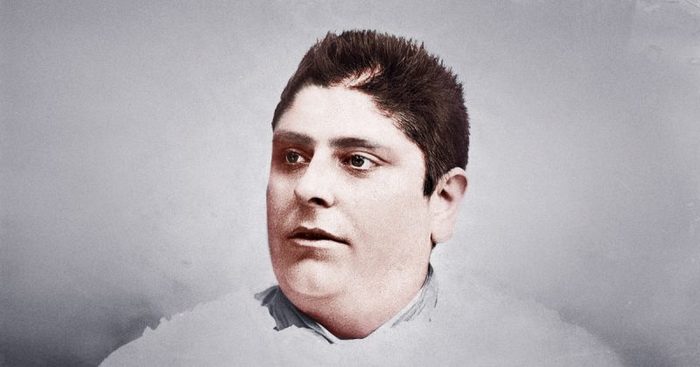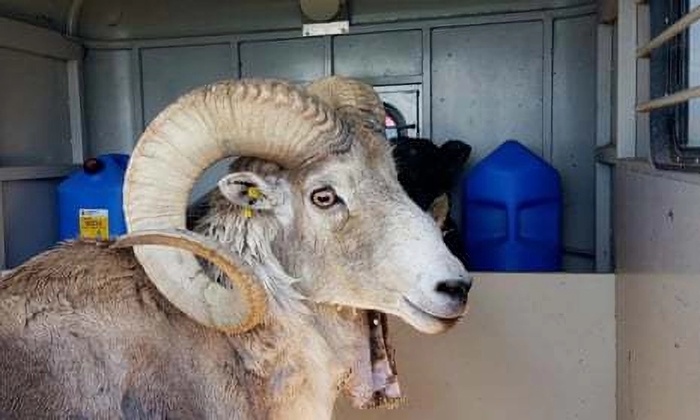Castrating the Ram of God. (Contains sexually explicit imagery) Sun 03 July 2022
Alessandro Moreschi: The last (acknowledged) castrato. Source: Only Known Recording of a Castrato
Alessandro Moreschi could hold a note:
And so on... Source: Alessandro Moreschi sings Ave Maria (no scratch)
From Only Known Recording of a Castrato – Italy’s Last Castrated Singing Boy:
Prepubescent castration for the purposes of the music industry was almost entirely abandoned during the late 18th century, and in 1870 it was made illegal in Italy.
Having been head-hunted by the Vatican's A&R men, Moreschi was snipped. Presumably by professionals.
From The Sinister Angel Singers of Rome:
historians don’t know how exactly surgeons performed the operation, but we can hazard some guesses.
First, surgeons probably soaked the boys in a warm bath, to soften up their tissues. Next, they knocked the boys out with opium, or else squeezed their necks until they passed out.
From there, the surgeons had two choices. They could cut out the testicles completely. Or, more safely, they could simply snip the blood vessels that supplied the testes with nourishment. After that, the testes withered away naturally. Either way, no puberty.
The description suggests Moreschi and peers were mis-sold a singing career; tempted by invitations to drug-fuelled sado-masochism (possibly even bondage) parties.
Some say that still happens.
Researchers can't be sure because the Vatican hasn't published a manual of its approved castration techniques. At least, not in English. And I can no more read Latin than I can hold a note.
Nevertheless, important questions arise from this description of the artistry that enabled Moreschi's artistry:
- How common was castration?
- What were the criteria for rejection and selection?
Go looking for answers and you discover castration was a profit-seeking solution for much more than the Vatican's singer-shortage.
From The Sinister Angel Singers of Rome:
Families in Italy were often huge back then, especially on farms. A dozen children was not uncommon. Parents simply could not feed them all, and were relieved to send them to a choir in the big city and let the church raise them instead.
It sure beat starving on the farm. So many desperate parents willingly castrated their little boys.
If the implications of those two paragraphs have not sunk in, perhaps this will help:
From The Sinister Angel Singers of Rome:
back-alley castrations flourished. By the mid-1700s, thousands of boys were getting snipped in Italy every single year.
Thousands... Every year... In Italy alone.
The Language of the Market
The scenario historians ask you to believe is that mid-18th century Italians lived on farms where they couldn't produce food but could produce more children than they could feed. Having produced children they couldn't feed, these farmers then sterilized the boys - reducing their ability to create more farm labor - before sending them to cities for the Church to raise.
For a price, presumably.
It seems unlikely. Because it is.
But historians describing Italian castration keep using peculiar language. They speak of 'farms' that can't produce food. Of children 'sent' to cities. Of 'back-alley' operations 'flourishing.' They speak of parents being 'relieved' to hand over their sons.
This is the language of a market. But a market in what?
To understand what historians of Vatican-sponsored entertainment are really describing, consider the American TV series Roots, which depicted the lives of slaves and the professionals that maintained them:
The wrong kind of blow-job. Source: Roots Clip
Readers whose neurons haven't been castrated will have realised what historians of Vatican-style showbiz are really alluding to: the breeding and management of sentient creatures for work and - in the castrati's case - for entertainment.
They are describing Manor Farm: The Musical.
Matter of fact as they are, orthodoxy's descriptions of the Vatican's snip parties - and of Italy's back-alley castrations - provide mindful readers with another important clue. The accounts inadvertently confirm the decades after 1740 as a time when humans were bred on Italian farms and sold to city dwellers.
How these boys were advertised - Ready-Snipped! or Snip-Your-Own! - was likely an important consideration for customers.
What Castration Offers
In an IHASFEMR context - the sentient slave context - castration would mean a less aggressive AI product weeding your garden or singing after dinner.
It could even extend the product's useful life.
From Men and other mammals live longer if they are castrated:
Bohannon said castration was a “way to make male mammals live longer”. This effect was observed in American men in the mid-20th century who were institutionalised, usually because of mental illness, and castrated, and in Korean eunuchs. The castrated men lived longer than their “regularly balled peers”.
This health benefit is probably news to many. Properly communicated, it could improve the lives of many modern men.
But another little known feature of castration is perhaps the most important in our exploration of the history of human genetic experimentation. Castration doesn't stop males from reproducing. Done right, it merely changes who benefits from matings.
The Technology
If historians are using Italian castration practices to mask liverstock management practices, we should look around and ask: what do modern livestock managers do with the fruit of the loin?
The Ram of Schubarth. Source: US rancher used tissue and testicles to breed ‘giant’ sheep
From US rancher used tissue and testicles to breed ‘giant’ sheep to sell for hunting:
In 2019, Schubarth paid $400 to a hunting guide for testicles from a trophy-sized Rocky Mountain bighorn sheep killed in Montana. Schubarth extracted semen from the bighorn sheep’s testicles and used it to breed large bighorn sheep and sheep crossbred with the argali species, the documents show.
Assistant US attorney general Todd Kim described Schubarth's activities as:
an audacious scheme to create massive hybrid sheep species to be sold and hunted as trophies.
Ah. Hunting.
To truly grasp Schubarth's business plan, consider the bizarre biographies of Lady Margaret Beaufort and a handful of well-known English castles. They tell a similar story of elite hunting and careful historical sanitisation.
Schubarth's prosecution in 2024 proves two things: reproductive manipulation via harvested testes is unremarkable technology, and it remains profitable enough that ordinary ranchers risk federal prosecution for it. If a Montana farmer can do this in 2019 with a mallet and a mixing bowl, what was possible in 1819? Or 1719?
The technology is simple. It's been simple for a long time.
But while Schubarth's enormous ram demonstrates how easy it to be a DIY Darwinist, it should not distract from how much can be achieved without removing a single testicle. That is: through simple, selective breeding.
From Empireworld by Sathnam Sanghera review:
The late psychiatrist Frederick Hickling ... traces present day concerns about absent black fathers to the slave system of barracking men and women separately and only bringing them together to copulate, to enlarge the enslaved population.
Again, pay attention to when.
From Slave Breeding in the United States:
To add to the supply of slaves, slaveholders looked at the fertility of slave women as part of their productivity, and intermittently forced the women to have large numbers of children. During this time period, the terms "breeders", "breeding slaves", "child bearing women", "breeding period", and "too old to breed" became familiar.
The historian E. Franklin Frazier, in his book The Negro Family, stated that "there were masters who, without any regard for the preferences of their slaves, mated their human chattel as they did their stock." 1 Ex-slave Maggie Stenhouse remarked, "Durin' slavery there were stockmen. They was weighed and tested. A man would rent the stockman and put him in a room with some young women he wanted to raise children from."
Frazier's book was published in 1940, putting Maggie Stenhouse's account of selective slave breeding into the 19th century.
Some academics object to characterizing this as systematic breeding.
From Slave Breeding in the United States:
Robert Fogel and Stanley Engerman reject the idea that systematic slave breeding was a major economic concern in their 1974 book Time on the Cross: The Economics of American Negro Slavery.
They argue that there is very meager evidence for the systematic breeding of slaves for sale in the market in the Upper South during the 19th century. They distinguish systematic breeding—the interference in normal sexual patterns by masters with an aim to increase fertility or encourage desirable characteristics—from pronatalist policies, the generalized encouragement of large families through a combination of rewards, improved living and working conditions for fertile women and their children,
Fogel and Engerman's objection is telling. They don't deny systematic breeding occurred - they dispute its economic significance. This is the argument of people managing a narrative, not investigating a phenomenon. Unable to challenge the testimony of formerly enslaved witnesses like Maggie Stenhouse, they claim it was a good thing.
Which sounds remarkably like the Vatican 'rewarding' Italian farmers by taking 'excess' boys off their hands. Before taking 'excess' glands off the boys.
However, academics do acknowledge a certain pattern emerges:
From Slave Breeding in the United States:
Fogel argues that when planters intervened in the private lives of slaves, it actually had a negative impact on population growth
I can't imagine how.
A Product Designed for Hacking
The evidence so far - Italian castration, Schubarth's simple breeding technology, American slavery accounts - establishes that systematic control of human breeding was both possible and actually practiced. Yet there's evidence more disturbing than historical accounts and old gramophone recordings. Evidence hiding in plain sight.
Evidence in the anatomy of human males.
Compare this bizarre arrangement with the female's:
At least his heart is in the right place. Source: Hegre
The reservoirs of female reproductive contribution are deep inside the body. The reservoirs of male contribution hang outside.
We're told male testes hang externally to keep sperm cool - to prevent heat damage. But that explanation creates more questions than it answers.
Why should male reproduction reservoirs be so vulnerable to heat while female reproduction reservoirs are not? Why can't the body regulate temperature of reproductive reservoirs in the same way for both sexes?
Marine mammals solved this with internal vascular cooling. Birds function with internal testes at higher temperatures than human core temperature. Why didn't humans evolve these better design?
The standard explanation—temperature regulation—becomes even harder to accept when we examine the prostate gland.
As detailed in Jeepers, Creepers - Where'd You Get Those Peepers, the human prostate is a cruel, cancer-prone mystery gland that shares more anatomy with common pigs than with our alleged chimpanzee ancestors.
More importantly for our purposes, the prostate sits deep in the pelvic cavity. Wrapped around the urethra. Bathed in body heat. Here, topped by the warm bulk of the bladder, is where seminal fluid—the transport medium for sperm—is created and stored:
Right here. Source: The Prostate Gland - TeachMeAnatomy
If testes hang outside to keep sperm cool, why does the gland that creates their transport fluid sit deep inside the warm pelvis, literally wrapped around a tube that carries warm urine? If cooling were the priority, why is only the sperm production external? The prostate and seminal vesicles produce 95% of semen volume, yet are located internally and producing flat out at body temperature.
When it's time to come, a system that should deliver a dose of fertiliser instead delivers a cocktail: a hot toddy with a cold cream float.
It's little wonder humans are - by mammal standards - relatively infertile.
And this is not the only way in which the exposed position of human testes brings science to its knees.
If evolution was entirely responsible for the siting of human testes, why did it locate them at a site exposed to high risk of harm? Why didn't it sheathe them in thigh muscles, embed them in gluteal tissue, or protect them behind bone - like the brain, heart and lungs? Why did evolution leave than dangling in the most exposed position imaginable?
This piece is more about dating humans than explaining the design of testes. But if you think I'm just playing with you, I asked AI to produce an independent assessment of my concerns about the location of human testes.
Feel free to download it and discuss with friends in the pub.
From a product design perspective, this arrangement suggests temperature regulation was not the primary consideration.
Accessibility was.
Examined from the viewpoint of a knife-wielding castrator—whether Vatican anatomist, plantation overseer, or back-alley Italian entrepreneur—the human male's external reproductive organs offer a clean cut with minimal risk of collateral damage. The layout enables:
- Assessment of reproductive potential before purchase
- Modification at any point during ownership
- Recovery of genetic material post- (as Schubarth demonstrated)
- Minimal training required for operators
- Low risk of damage to surrounding tissue
- Immediate visual verification of successful procedure
The product is not merely functional. It is hackable.
Farmers have known for millennia that castration is simple, low-risk, and reliably prevents breeding. It's the accessibility that makes it valuable, not the thermoregulation.
And as the Schubarth case demonstrates, nothing need go to waste.
This layout offers customers a choice: purchase decisions could be deferred. Rather than selecting breeding males at point of sale, owners could assess, train, and test their livestock before deciding: let it breed, or let it bleed.
This isn't speculation. This is observable anatomy that makes no sense from an evolutionary perspective but perfect sense from a product design perspective.
Human males weren't designed to survive efficiently. They were designed to be bred efficiently. By someone else.
Behavioral Evidence
If human breeding was systematic enough to influence anatomical design, we should expect to find traces of breeding protocols in the historical record.
And we do. But not where historians look.
It may account for the bed structure recorded in Breedon Priory, Leicestershire. And perhaps even its name. And it may account for sheela-na-gig carvings found across the British Isles and Ireland.
English folklore preserves evidence of this deferred-decision approach to breeding management. Consider the 'teasers' who chase young women at Padstow's 'Obby 'Oss' festival:

Stock management as cargo cult. Source: 'Obby 'Oss Festival - Wikipedia
'Teaser' is livestock farmers' jargon. It means 'a sterilized male'. Stock farmers use teasers to test if females are on heat before putting females in with selected fertile males to reproduce.
Padstow probably doesn't preserve ancient pagan rites. It cargo-cults livestock management. The participants don't understand what they're reenacting. But the protocol is unmistakable: test females for ovulation using sterilized males, then introduce selected fertile males for breeding.
Why use teasers?
Because as David Barash explains in Homo Mysterious - Evolutionary Puzzles of Human Nature, 2012, p18:
Go to a zoo and take a look at the chimpanzees, gorillas, or baboons (or, indeed, nearly any nonhuman primate). There is no question when an adult female is ovulating. It is as obvious as the bright pink cauliflower on her behind. Not so for our own species. Given the great importance—socially, biologically, evolutionarily—of reproduction, and thus of ovulation, it is extraordinary and as yet unexplained why even now, in our medically sophisticated 21st century, it is exceedingly difficult to tell something so basic as when a woman is fertile.
If human ovulation is concealed, breeding managers would need fertility testing protocols.
From 'Obby 'Oss Festival:
Sometimes in the late afternoon, the 'osses may meet at the maypole and dance together.
The Padstow festival appears to preserve such a protocol in ritualized form. And while we're reading that site, we note:
There is no evidence to suggest that the 'Obby 'Oss festival is older than the eighteenth century.
There it is again. The 18th century. The same period when:
- Italian castration practices become widespread and documented
- The word 'society' emerges from 'sus' (pig family). Source: Dating the Intelligent Pig - Part One
- 'Ancient' henges and monuments align perfectly with solstices despite millennia of alleged axial precession. Source: Dating the Intelligent Pig - Part One
- Human tails and horns appear in medical literature. Source: Dating the Intelligent Pig - Part Two
- Learned Pigs tour England, amazing crowds with their intelligence. Source: Dating the Intelligent Pig - Part One
- Britain's 'ancient' serpent mounds are first documented. Source: Dating the Intelligent Pig - Part One
- The Ordnance Survey is founded to map a barely recorded landscape. Source: Dating the Intelligent Pig - Part One
All of these phenomena converge in the decades after 1740. These are not coincidences. These point to the product's launch date.
What Comes Next
This article has focused on evidence of control over male reproductivity via the easily accessible, easily modified, suspiciously vulnerable anatomy of human males. But any human breeding program ultimately depends on managing female reproduction.
The anatomy of human females, the historical management of women's fertility, and the folk practices surrounding female reproduction also tell the same story. Albeit through complex evidence.
That evidence will be the subject of Part Four.
© All rights reserved. The original author/creator of each image, video, quote or text retains full ownership and rights. They are reproduced here on fair use ('fair dealing') terms.
-
Frazier's quote can be read in the original at The Negro Family In The United States , E. Franklin Frazier, University of Chicago Press, 1940, p24 ↩
-
I asked medically competent AI to critique my claims about the design philosophy ↩
More of this investigation:
Dating the Intelligent Pig,
More of this investigation:
The Mutant Chimp Gets a Brain,
More of this investigation:
IHASFEMR
More by tag:
#human meat, #Manimal Farm



